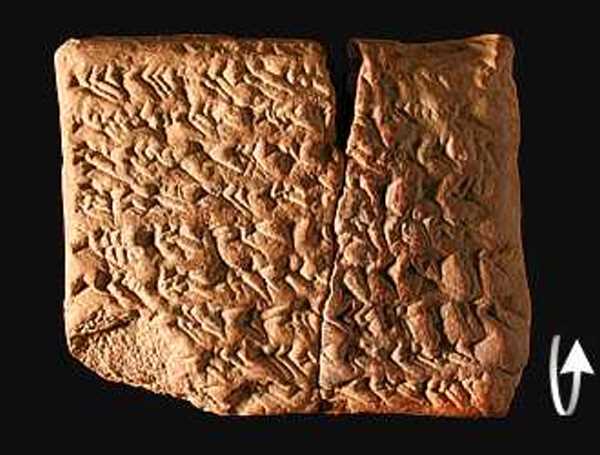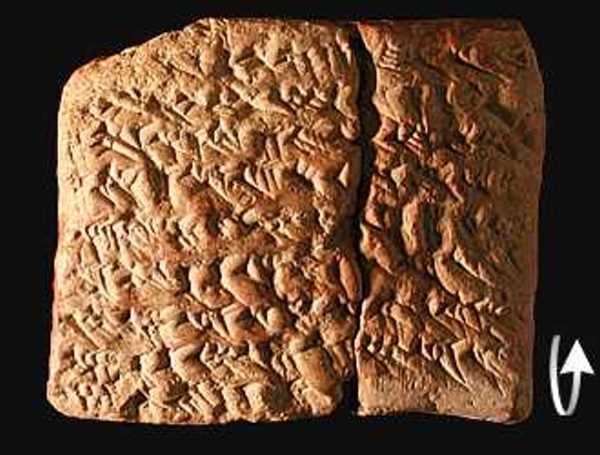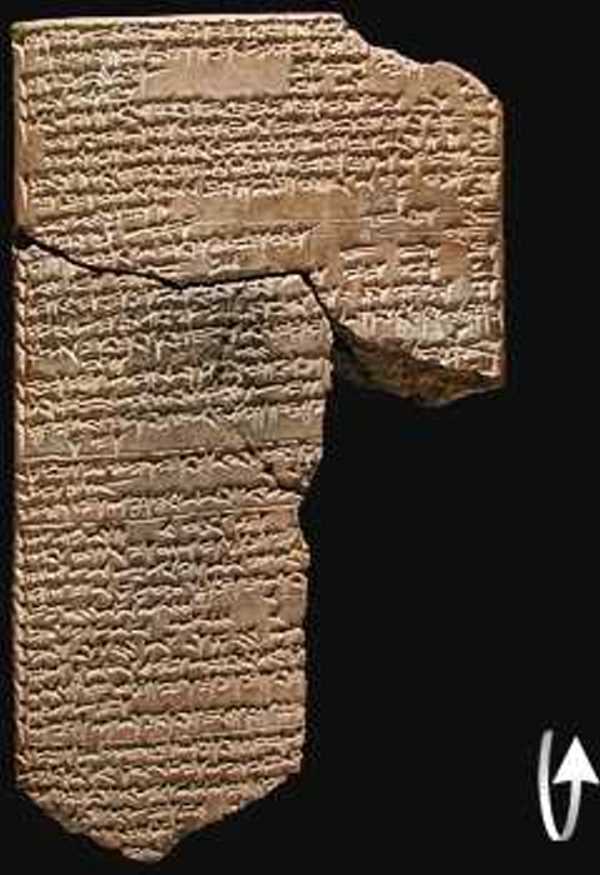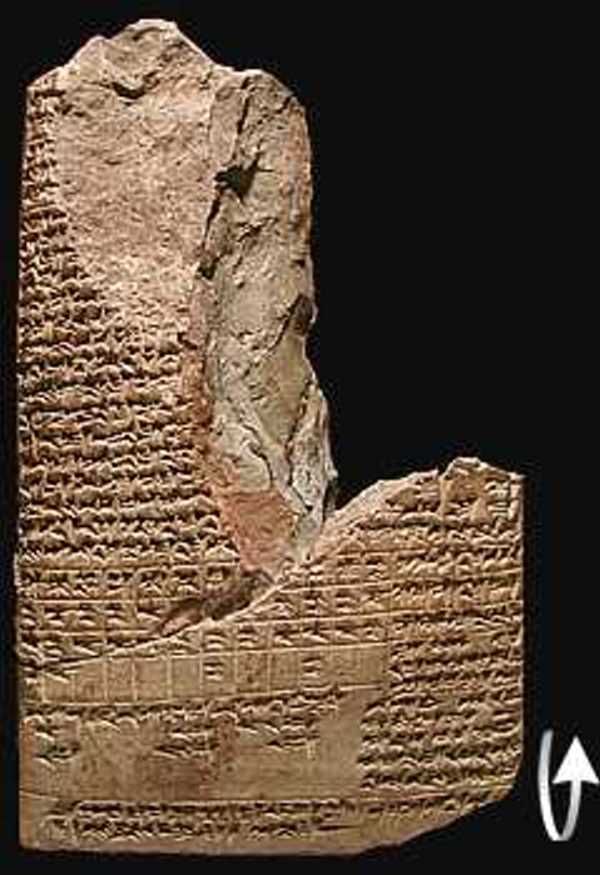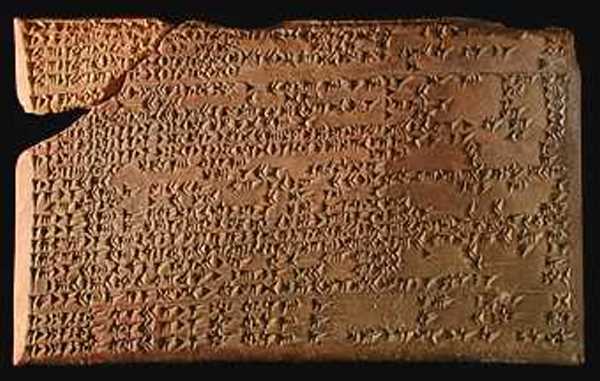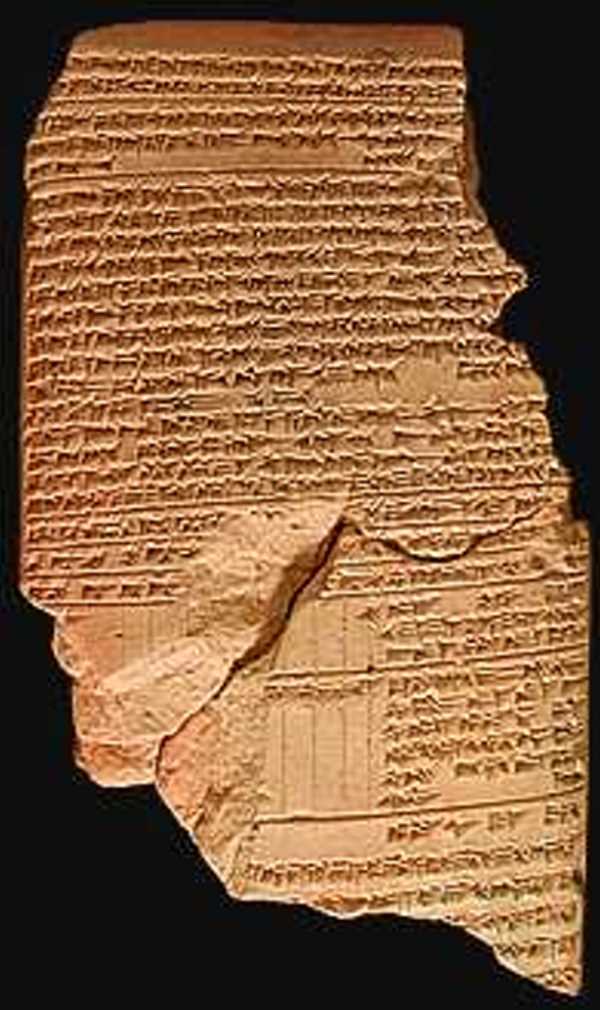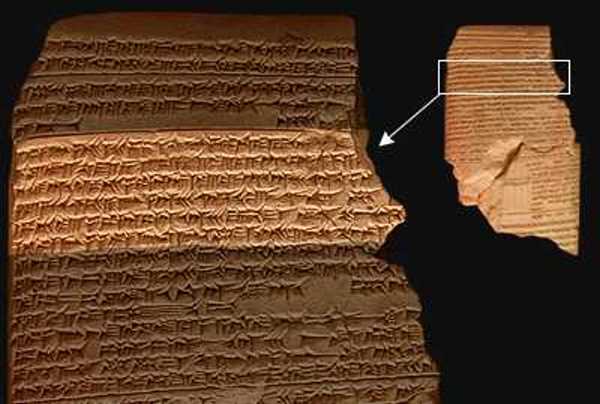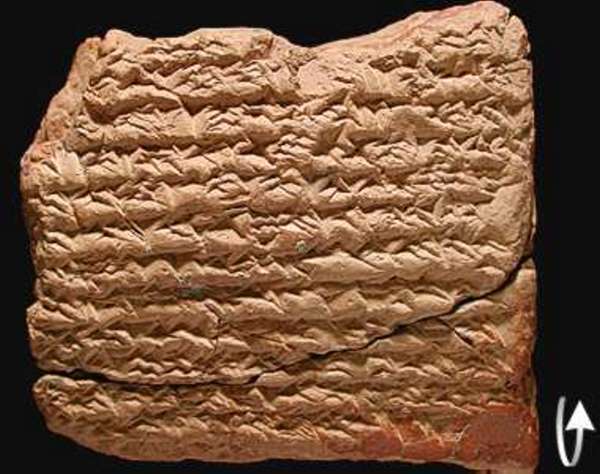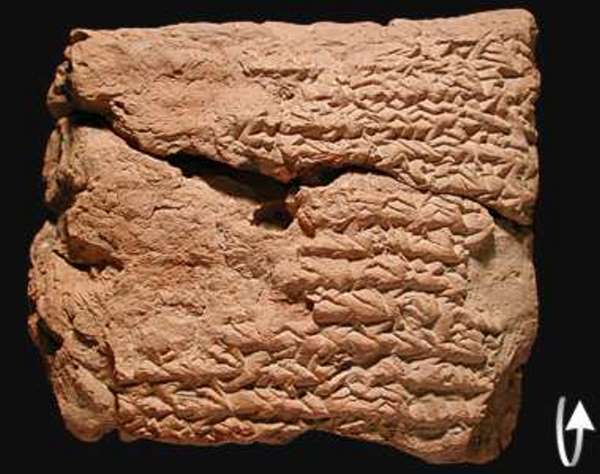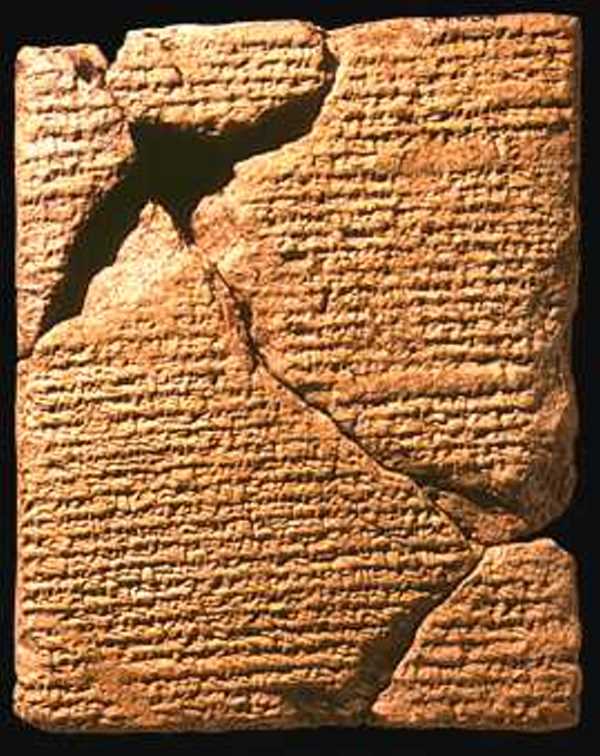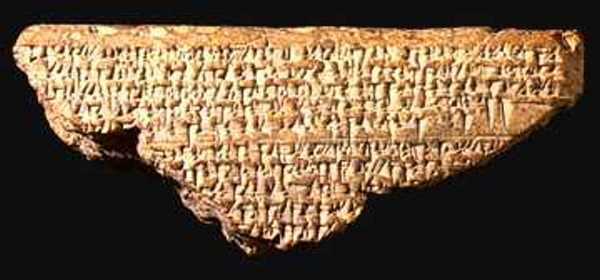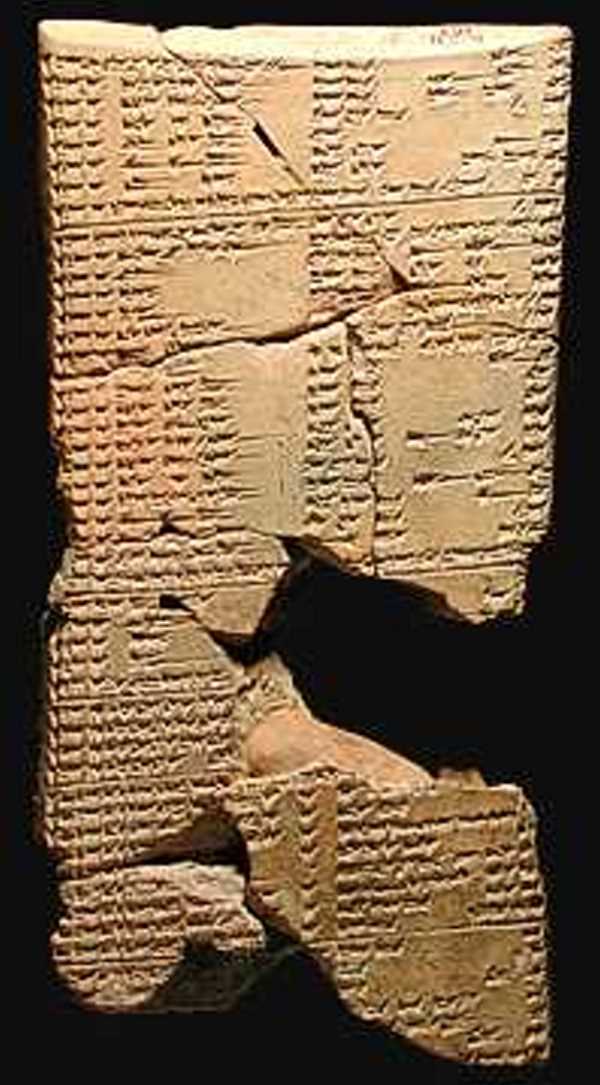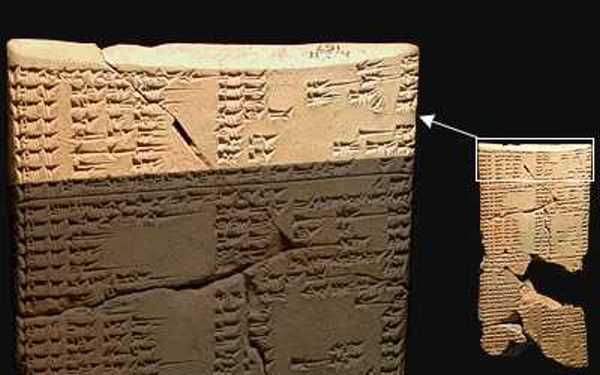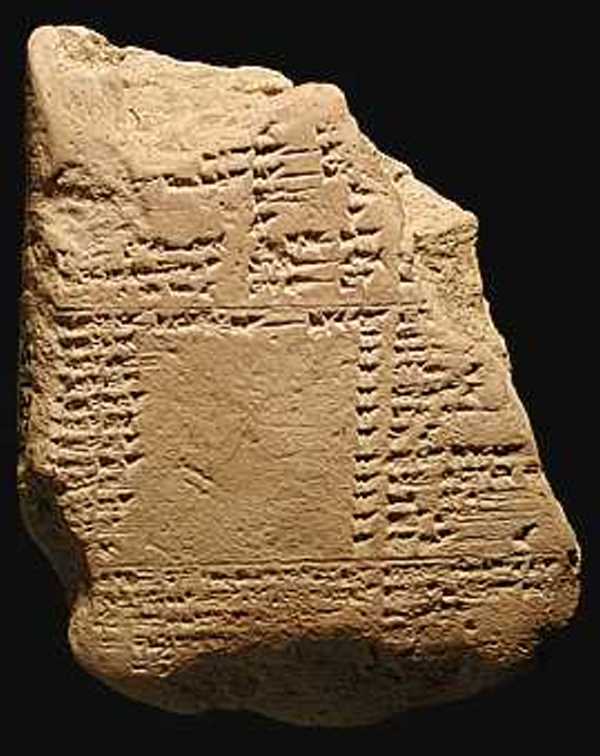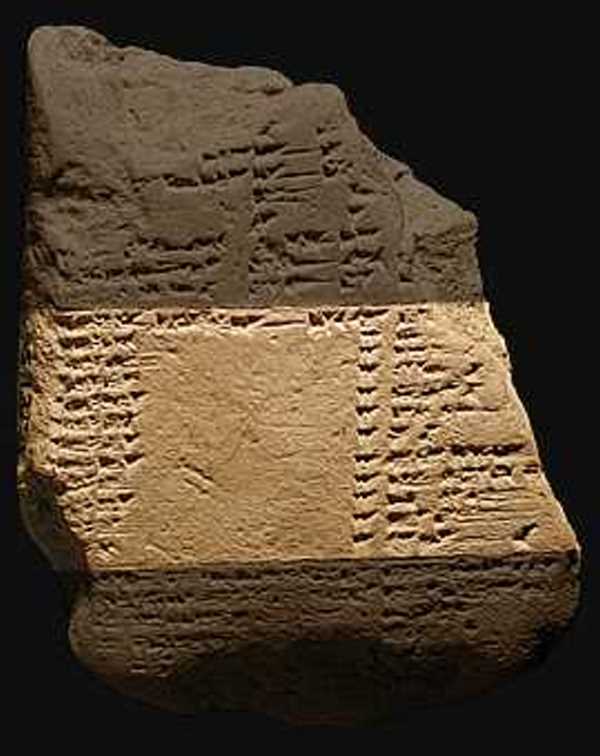|
Sumerian Astronomical Knowledge |
||||
|
..
Knowledge of
Solar and Lunar Eclipses In the 6th century B.C. the scribes of Enuma Anu Enlil were a group of men at the Babylonian court who were experts in astronomy and astrology. Texts refer to this group of scribes, but we do not know exactly who they were, what they did and how they were trained. However, for hundreds of years the scribes kept accurate records of natural events on the earth and in the sky in order to predict the future. Sumerian astronomy was primitive compared to later Babylonian standards. Babylonian clay tablets that have survived since the dawn of civilization in the Mesopotamian region - record the earliest total solar eclipse seen in Ugarit on May 3, 1375 BC. This website has a wonderful collection of Astronomy Tablets presented in a Unique way |
||||
|
..
Daily diaries are records of
astronomical observations and important natural
events which took place on earth. Scribes made
their observations and recorded them on clay
tablets like this for each day of the year.
The front of this tablet is a record of a lunar eclipse and the appearance of several important stars. It describes how on the 13th night, of month 9, of the 97th year the bright star of the constellation 'Old Man' had reached its highest point. There was also an eclipse of the moon. Tablet translation: A translation of lines 1 to 9 1. Year 97, month IX, night of the 1[3th?....] ...., measured; 2. the bright star of the Old Man stood in culmination, 3. lunar eclipse; on the east side 4. when it began, in 21 of night all of it became covered; 5. 16 of night totality; when it began to clear, 6. it cleared in 19 of night from east and north to 7. the west? ; 56 onset, totality, 8. [and clear]ing; at one-half beru after sunset. 9. [....] eclipse; in its eclipse, Sirius
The back of this
tablet describes how on the 13th night, most of the
planets were not visible, Saturn had set but Mars
had appeared.
During the eclipse of the moon, the north wind blew and it was cold. The eclipse happened when the moon was positioned 2 cubits in front of the stars of the constellation Cancer. The north wind blew from sunrise to moonset and it became very cold. On the 14th night the sky was covered by clouds from sunset to moonrise and so the stars and planets could not be seen. On the nights of the 15th and 16th it was cloudy with rain. Tablet translation: A translation of lines 1 to 9 1. [stood there; Sa]turn set; Mars came out; the remainder of the planets 2. did not stand there. In its eclipse, the north wind which was set to the west side 3. blew; it was cold. 2 cubits in front of the front stars 4. of Cancer it became eclipsed. The 13th, sunrise to moonset: 9° 10', measured; the north wind blew, 5. the cold became severe. Ni[ght] of the 14th, sunset to moonrise: 8° 20'; 6. clouds, I did not watch; very overcast. The 14th, all day clouds crossed the sky. 7. Night of the 15th, clouds crossed the sky, slow rain, much PISAN DIB. 8. The 15th, very overcast. Night of the 16th, all night clouds crossed the sky. 9. The 16th in the morning, overcast?." |
||||
|
..
The 'Enuma Anu Enlil' series of tablets
is a collection of documents interpreting
observations of the stars, planets, weather and
natural occurrences like earthquakes.
The tablets were created from information and observations over hundreds of years. They were kept together like reference books so that scribes could use them to interpret the meaning of certain events and how they would affect the king. The front of this tablet talks about the month Nisannu (March/April) and what will happen in the future depending on what the sun looks like. What does 'Enuma Anu Enlil' mean?
The first words of this text are, 'Enuma Anu Enlil' which means, 'When Anu Enlil'. Tablet translation: Lines 2 to 8 read: 2. If in Nisannu the sunrise (looks) sprinkled with blood and the light is cool: rebellion will not stop in the country, there will be devouring by Adad. 3. If in Nisannu the normal sunrise (looks) sprinkled with blood: battles 4. If in Nisannu the normal sunrise (looks) sprinkled with blood: there will be battles in the country. 5. If on the first day of Nisannu the sunrise (looks) sprinkled with blood: grain will vanish in the country, there will be hardship and human flesh will be eaten. 6. If on the first day of Nisannu the sunrise (looks) sprinkled with blood and the light is cool: the king will die and there will be mourning in the country. 7. If it becomes visible on the second day and the light is cool: the king's ... high official will die and mourning will not stop in the country. 8. If the sunrise (looks) sprinkled with blood on the third day: an eclipse will take place
Tablet translation: Lines 2 to 10 read: 2. If with it a cloudbank lies on the right of the sun: the trade in barley and straw will expand. 3. If with it a cloudbank lies to the left of the sun: misfortune 4. If with it a cloudbank lies in front of the sun: the king of Elam [will die] 5. If with it a cloudbank lies behind the sun: the king of the Gutians [will die] 6. If in Pit babi the sun is surrounded by a halo in the morning: there will be a severe heat in the country and the Lamashtu-demon will attack the country. 7. If with it a cloudbank lies to the right of the sun: the king of Eshnunna will die. 8. If with it a cloudbank lies to the left of the sun: the king of Subartu will die and his dynasty will come to an end. 9. If with it a cloudbank lies in front of the sun: the rains from heaven (and) the floods from the depths will dry up. 10. If with it a cloudbank lies behind the sun: the harvest of the land will not be brought in. ..
Tablet
translation: 8. If a normal disk is very dark and its luminosity is very dirty: the king will not show mercy to his country, he will capture his people. 9. If a normal disk is present and one disk stands to the right: one from among the king's relief troops will take the throne. 10. If a normal disk is present and one disk stands to the left: from the throne of your relief troops the king of Amurru will rebel. If a normal disk is present and one disk stands to the right (and) one to the left: if the king treats the city and his people kindly for reconciliation and they become reconciled, the cities will start vying with each other, city walls will be destroyed, the people will be dispersed. 22. If seven disks rise: a village dweller will take the throne, the king's country will rebel against him and he will be besieged and killed. 23. If on the first of Nisannu two disks come up, the king will die. 24. If on the eleventh of Nisannu three disks come up: a large army will perish. 25. If on the twelfth of Nisannu five disks come up, the king will go into exile. 26. If on the fifteenth or fourteenth of Nisannu five disks come up: business will be reduced. |
||||
|
..
This tablet highlights what to look for
in each month in order to adjust the
calendar.
The tablet explains that the year is made up of twelve months with 360 days. It goes on to say that the astronomer should study the length of the year and look in the tablets to learn the timings when stars first appear, are visible and then disappear. He should also know when the sun and the moon appear in the months Addaru and Ululu, and when the moon rises and first appears each month. This will give him the answers to work out the months of the year and the days of the months Tablet translation: The highlighted part of this tablet reads: Twelve are the months of the year, 360 are its days. Study the length of the year and look (in tablets) for the timings of the disappearances, the visibilities (and) the first appearance of the stars, (also) the position (?) of the Field star at the beginning of the year, the first appearance of the sun and the moon in the months Addaru and Ululu, the risings and first appearances of the moon as observed each month; watch the 'opposition' of the Pleiades and the moon, and (all) this will give you the (proper) answer, (thus) establish the months of the year (and) the days of the months, and do perfectly whatever you are doing.
|
||||
|
..
Monthly tablets are a summary of
astronomical observations and a record of
important events for one month. Tablets like this
are based on the observations and information from
daily diaries.
The front of this tablet describes how on one night, in the 7th month, of the 162nd year, the beginning and middle of the night was cloudy. In the south there was much thunder and lightning and the east wind blew. At the end of the night, the moon was 1 ½ cubits behind the rear Twin star. On the 19th night, the moon was 1 ½ cubits behind the rear star of the Crab to the south. On the night of the 20th and 21st, clouds were in the sky. On the night of 22nd, clouds were in the sky and the wind blew. At the end of the night, the moon was 1 cubit below the rear foot of the Lion. Tablet translation: The front of this tablet says: 1. [Year 162] king Alexander. 2. [Month VII....] clouds were in the sky; first (and) middle part of the night, overcast. 3. [....] in the south, lightning flashed continuously, much thunder, .... 4. [....] and east winds blew; last part of the night, the moon was 1½ cubits behind Beta Geminorum. 5. [....] ...., clouds were in the sky, the south and east winds blew. 6. [.... Night of the 19th, .... last part of the night,] the moon was 1½ cubits behind Delta Cancri. 7. [.... Night of] the 20th, clouds were in the sky; [last part of the night?,] the moon 8. [....] being [nn] cubits low to the south [....] 9. [....] Night of the 21st, clouds were in the sky 10. [....] The 21st, very overcast, a little rain shower 11. [....] gusty [....] winds blew. Night of the 22nd, clouds were in the [sky, the .... wind bl]ew, 12. [....] very overcast; last part of the night, the moon was 1 cu[bit] below Beta Virginis 13. [....cl]ouds were in the sky, the south wind blew. Night of the 24th?, .... mu[ch ....]
Tablet translation: Lines 4 to 11 read: 4. for 1 shekel of wrought silver. At that time, Jupiter was in Aquarius; 5. Mercury was in Libra; Saturn was in Taurus; Mars was in Sagittarius. Around the 7th, 6. Mercury's last appearance in the east in Libra; the 7th, Jupiter became stationary in Aquarius; 7. [around] the 28th, Saturn's acronychal rising. The 29th, Mars reached Capricorn. 8. That [month,] the river level, from the 15th until the 24th, rose 6 fingers, total: 9. 26 ½ was the na (gauge); at the end of the month, it receded 2 fingers, total: 27 was the na (gauge). 10. .... That month, the .... the troops of the king 11. The general of Babylonia who is above the four generals |
||||
|
..
Look at the Astronomy Story to discover how this information was used! What does 'Mul
Apin' mean? The first words of this text are 'Mul Apin' which means 'The Plough'. Tablet translation: The tablet describes the appearance of different constellations and stars. It reads: On the 1st of Nisannu the Hired Man becomes visible. On the 20th of Nisannu the Crook becomes visible. On the 1st of Ayyaru the Stars become visible. On the 20th of Ayyaru the Jaw of the Bull becomes visible. On the 10th of Simanu the True Shepherd of Anu and the Great Twins become visible. On the 5th of Du'uzu the Little Twins and the Crab become visible. On the 15th of Du'uzu the Arrow, the Snake, and the Lion become visble; 4 minas is a daytime watch, 2 minas is a nighttime watch. On the 5th of Abu the Bow and the King become visible. On the 1st of Ululu [. . . .] On the 10th of Ululu the star of Eridu and the Raven become visible. On the 15th of Ululu Shu-pa, Enlil, becomes visible. On the 25th of Ululu the Furrow becomes visible. |
||||
|
..
Part of this tablet records when and
where several different stars and planets appeared
in the sky.
It is dated in the 148th year of the Seleucid Era, under king Antiochus IV, on the 26th of the month Nisannu, and says that Mercury appeared in the west in the Bull. It also records that in the month of Ayyaru, at the beginning of the second night, Mercury was 1 ½ cubits below the northern part of the Chariot. At the beginning of the 3rd night Mercury was above the southern part of the Chariot. At the beginning of the 9th night Mercury was 1 cubit and 4 fingers above the front star of the Twins' feet. At the beginning of the 11th night Mercury was 1 cubit 4 fingers above the rear star of the Twins' feet. At the beginning of the 15th night Mercury was 4 ½ cubits above the Twins' star near the Shepherd. In the month Simanu, the 3rd night was the last visibility of Mercury. Tablet translation: A translation of lines 20 to 23: 148th year (Seleucid Era), An(tiochus IV) being king, Nisannu (month 1) 26th, first visibility of Mercury in [the west in Tau]rus, bright, high, from sunset to its setting 16 º, (hence) about [the .... (calculated) first visibility]; 21. Ayyaru (month 2) night of the 2nd first part of the night Mercury below Beta Tauri 1 ½ cubits; [night of the 3rd] first part of the night Mercury above Zeta Tauri [... cubits]; 22. Night of the 9th first part of the night Mercury above Eta Geminorum 1 cubit 4 fingers, [Mercu]ry (being) 4 fingers back to the west; night of the 11th first part of the night [Mercury] 23. Above Mu Geminorum 1 cubit 4 fingers; night of the 15th first part of the night Mercury [above Ga]mma Geminorum 4 ½ cubits; Simanu (month 3), 3rd, last (theoretical) visibility of Me[rcury] |
||||
|
Some tablets contain warnings about what will happen to an astronomer if he teaches his knowledge to the wrong people. They show how carefully the information was guarded.
Tablet translation: "Secret tablet of Heaven, exclusive knowledge of the great gods, not for distribution! He may teach it to the son he loves. To teach it to a scribe from Babylon or a scribe from Borsippa or any other scholar is an abomination to Nabu and Nisaba. ...a Babylonian or a Borsippan or any other scholar.......whoever speaks... [Nabu and] Nisaba will not confirm him as a teacher. In poverty and deficiency may they put an end to his ......; may they kill [him] with dropsy." |
||||
|
..
'Shumma alu' is a series of tablets relating to omens. They explain the meaning and consequences of everyday omens. For instance, even spilling some water might be considered important and meaningful. This was used as a reference for the scribes who 'read' omens as part of their duties. They advised people about the meaning of omens and how to avoid the consequences. What does
'Shumma alu' mean? The first words of this series are 'Shumma alu' which means 'If a house'.
Tablet translation: The highlighted part of this tablet reads: 1. If the outside of a house looks showy it will be deserted. 2. If a house looks calm, the house will be lucky. 3. If a house looks attractive, it will not last long. 4. If a house looks unattractive, the people living in it will be happy. 5. If a house looks shaded, the people living in it will be happy. 6. If the look of a house keeps changing so will its owners. 7. If a house looks normal, the owner will grow old.
Tablet translation: The highlighted part of this tablet reads: If a king takes part in ceremonies in the month Nisannu, the result will be fame. If a king takes part in ceremonies in the month Ayyaru, the result will be good luck. If a king takes part in ceremonies in the month Simanu, the house will grow old. If a king takes part in ceremonies in the month Du'uzu, he will not live long. If a king takes part in ceremonies in the month Abu, his son will die. If a king takes part in ceremonies in the month Ululu, there will be an uprising against him. If a king takes part in ceremonies in the month Tashritu, goods will come to him. If a king takes part in ceremonies in the month Arahsamnu, he will have peace. If a king takes part in ceremonies in the month Kislimu, he will have a protective genii. If a king takes part in ceremonies in the month Tebetu, he will meet his end. If a king takes part in ceremonies in the month Shabatu, the result will be profit. If a king takes part in ceremonies in the month Addaru, his god will bless him. |
||||
| FAIR USE NOTICE: This page contains copyrighted material the use of which has not been specifically authorized by the copyright owner. Pegasus Research Consortium distributes this material without profit to those who have expressed a prior interest in receiving the included information for research and educational purposes. We believe this constitutes a fair use of any such copyrighted material as provided for in 17 U.S.C § 107. If you wish to use copyrighted material from this site for purposes of your own that go beyond fair use, you must obtain permission from the copyright owner. | ||||
|
|

